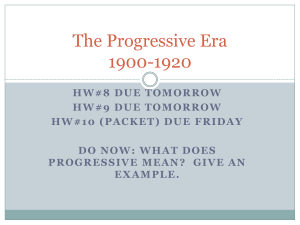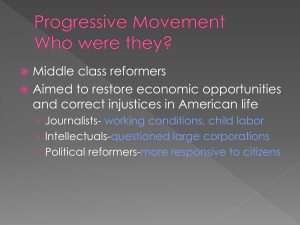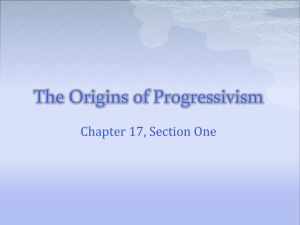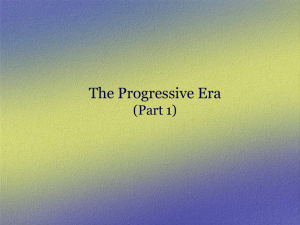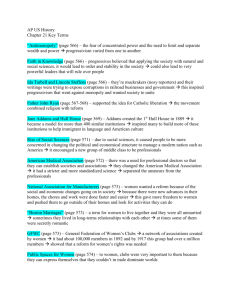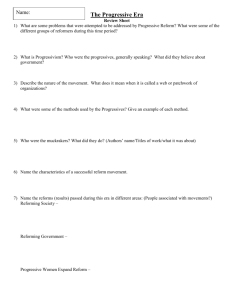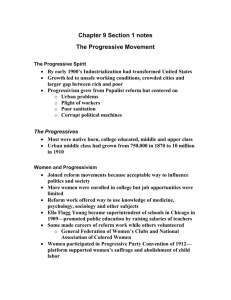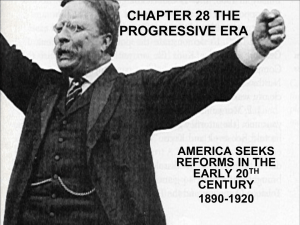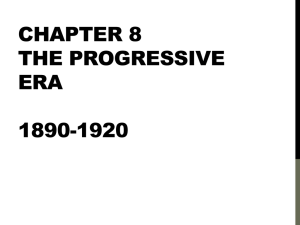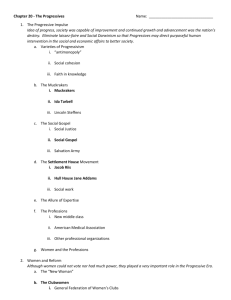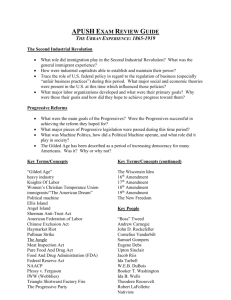000021_22 Brinkely Reading
advertisement
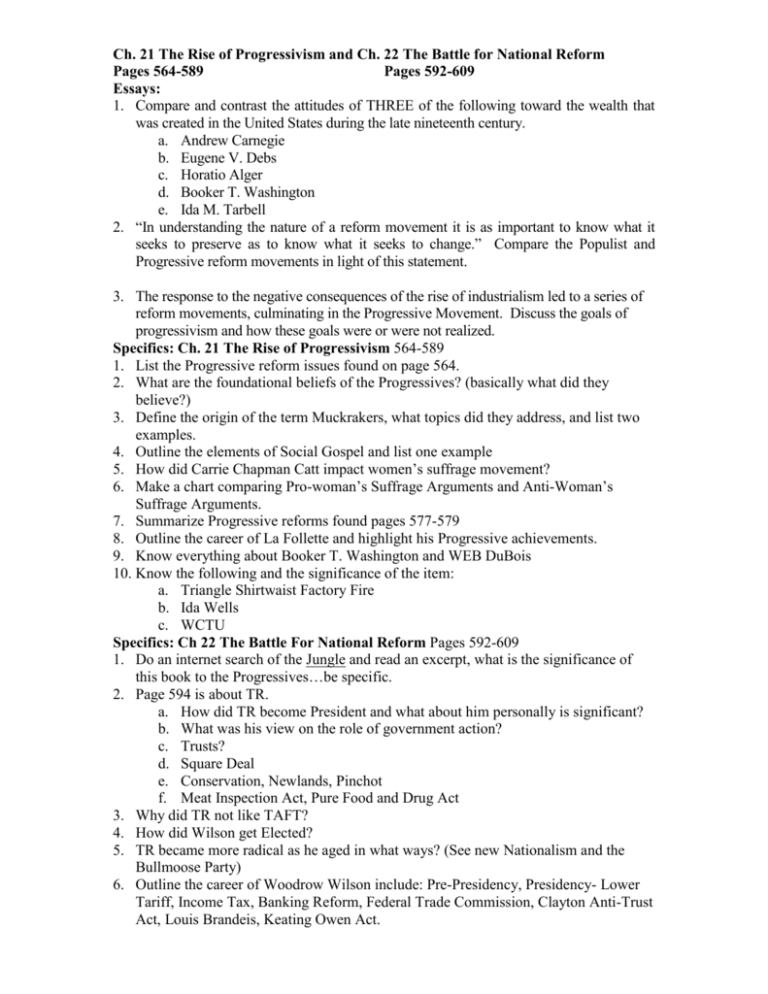
Ch. 21 The Rise of Progressivism and Ch. 22 The Battle for National Reform Pages 564-589 Pages 592-609 Essays: 1. Compare and contrast the attitudes of THREE of the following toward the wealth that was created in the United States during the late nineteenth century. a. Andrew Carnegie b. Eugene V. Debs c. Horatio Alger d. Booker T. Washington e. Ida M. Tarbell 2. “In understanding the nature of a reform movement it is as important to know what it seeks to preserve as to know what it seeks to change.” Compare the Populist and Progressive reform movements in light of this statement. 3. The response to the negative consequences of the rise of industrialism led to a series of reform movements, culminating in the Progressive Movement. Discuss the goals of progressivism and how these goals were or were not realized. Specifics: Ch. 21 The Rise of Progressivism 564-589 1. List the Progressive reform issues found on page 564. 2. What are the foundational beliefs of the Progressives? (basically what did they believe?) 3. Define the origin of the term Muckrakers, what topics did they address, and list two examples. 4. Outline the elements of Social Gospel and list one example 5. How did Carrie Chapman Catt impact women’s suffrage movement? 6. Make a chart comparing Pro-woman’s Suffrage Arguments and Anti-Woman’s Suffrage Arguments. 7. Summarize Progressive reforms found pages 577-579 8. Outline the career of La Follette and highlight his Progressive achievements. 9. Know everything about Booker T. Washington and WEB DuBois 10. Know the following and the significance of the item: a. Triangle Shirtwaist Factory Fire b. Ida Wells c. WCTU Specifics: Ch 22 The Battle For National Reform Pages 592-609 1. Do an internet search of the Jungle and read an excerpt, what is the significance of this book to the Progressives…be specific. 2. Page 594 is about TR. a. How did TR become President and what about him personally is significant? b. What was his view on the role of government action? c. Trusts? d. Square Deal e. Conservation, Newlands, Pinchot f. Meat Inspection Act, Pure Food and Drug Act 3. Why did TR not like TAFT? 4. How did Wilson get Elected? 5. TR became more radical as he aged in what ways? (See new Nationalism and the Bullmoose Party) 6. Outline the career of Woodrow Wilson include: Pre-Presidency, Presidency- Lower Tariff, Income Tax, Banking Reform, Federal Trade Commission, Clayton Anti-Trust Act, Louis Brandeis, Keating Owen Act. Ch 21 Progressives and Ch 22 TR and Wilson Key Terms Progressive Women’s Issues Muckrakers WCTU McClure’s Magazine Carrie Nation Ida Tarbell Suffragette Lincoln Seffens Susan B. Anthony Upton Sinclair Alice Paul The Jungle Carrie Chapman Catt Ida Wells NAWASA Triangle Shirtwaist Factory Fire Political Reforms Initiative Referendum Recall Progressive Ideals Government intervention to improve society Theodore Roosevelt Admin (Domestic) William McKinley Assassination Square Deal (RR)Interstate Commerce Act 1887 (RR) Hepburn Act 1906 (RR) Elkins Act 1903 Meat Inspection Act 1906 Pure Food and Drug Act Food and Drug Administration Conservation William Howard Taft 1908-1912 Pinchot-Ballenger Controversy Election of 1912 “New Nationalism” Bull Moose Party Woodrow Wilson Admin “New Freedom” 16th Amendment (Income Tax) 17th Amendment (Senators, Direct Election of) 18th Amendment (Prohibition) 19th Amendment (Women’s Suffrage) Clayton Anti-Trust Act Federal Trade Commission Federal Reserve System Federal Income Tax Lower Tarriff, Federal Trade Commission Louis Brandeis Keating Owen Act Black America Plessey v. Ferguson Booker T. Washington Up From Slavery Tuskegee Institute W.E.B. DuBois Niagara Movement NAACP Souls of Black Folks Marcus Garvey
